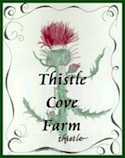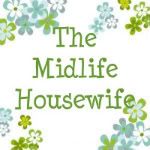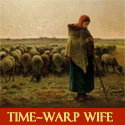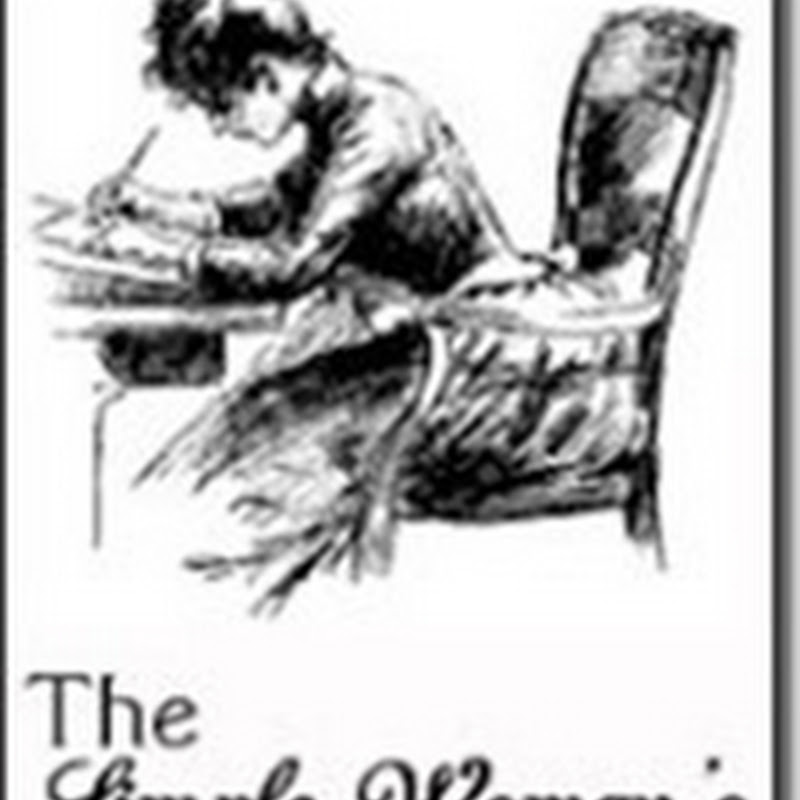I have a good recipe for Corned Beef & Hash & wanted to find an authentic Irish Soda Bread recipe. I found an AWESOME website: European Cuisines. He even gives a great history lesson to go along w/your meal. (Homeschool credits!!) So, in case you're interested in my recipes ~ along w/all the others floating around the internet today ~ mine are tasty AND easy. That combination will nearly always get my vote! I think my Hash recipe came from Faithfulness Farm Blog, modified to my family's tastes.
CORNED BEEF & HASH~

2 TB vegetable oil (I use Safflower oil)
8 oz cooked corned beef, diced
1 sweet onion, finely chopped
1 bell pepper, finely chopped (optional ~ I don't use this)
2 medium baking potatoes, peeled & shredded (about 2 cups) (I sometimes use red potatoes)
4 tablespoons unsalted butter
4 large eggs
Kosher salt & freshly ground pepper
4 slices cheddar cheese (about 2 oz)
~Heat the oil in the medium skillet over high heat.
~Add corend beef & cook, stirring w/a wooden sppon, until it releases soem fat & browns slightly, about 3 minutes.
~Stir in onion, bell pepper (optional) & potatoes & cook, UNDISTURBED, until brown & crips on the bottom, about 6 minutes.
~Continue cooking, turning the hash as it browns evenly, about 15 more minutes.
~MEANWHILE, heat the butter in another skillet over medium-high heat. Fry the eggs sunny-side up or over easy; season w/salt & pepper.
~Pleace the cheese slices on top of the hash, reduce heat & let sit until the cheese melts, about 1 minutes.
~Serve each hash serving topped w/one of the fried eggs.
IRISH SODA BREAD ~ WITH A LITTLE HISTORY ~
A little soda bread history~~
Irish baking over the centuries has been affected by two main factors. The first is our climate. The influence of the Gulf Stream prevents either great heat in  the summer or cold in the winter. As a result, hard wheats, which need such heat and cold, don't prosper. Those wheats make flour with a high gluten content that responds well to being raised with yeast. But soft wheats do grow well here.
the summer or cold in the winter. As a result, hard wheats, which need such heat and cold, don't prosper. Those wheats make flour with a high gluten content that responds well to being raised with yeast. But soft wheats do grow well here.
 the summer or cold in the winter. As a result, hard wheats, which need such heat and cold, don't prosper. Those wheats make flour with a high gluten content that responds well to being raised with yeast. But soft wheats do grow well here.
the summer or cold in the winter. As a result, hard wheats, which need such heat and cold, don't prosper. Those wheats make flour with a high gluten content that responds well to being raised with yeast. But soft wheats do grow well here.The other factor has been the abundance of fuel. Ireland's various medieval overlords could never exercise the tight control over forest land that landowners did in more populous, less wild areas, like England and mainland Europe. This meant that Irish people had less trouble getting their hands on firewood. Where there was no wood, there was almost always heather, and usually turf too. As a result, anyone with a hearthstone could bake at home whenever they wanted to, rather than needing to use a communal bake-oven to conserve fuel.
These two factors encouraged the Irish householder of the past two centuries to bypass yeast for everyday baking. The primary leavening agent became what's now known here as bread soda -- just plain bicarbonate of soda, to US and North American users. Hence the name soda bread. But for a long time, most bread in Ireland was soda bread: "bakery bread" was only available in big cities. Soda bread was made either in a pot or casserole over the fire, or else baked on a bakestone, an iron plate usually rested directly in/on the embers. From these two methods are descended the two main kinds of soda bread eaten in Ireland, both north and south, to the present day.
Cake style brown soda bread
In Ireland, "plain" soda bread is as likely to be eaten as an accompaniment to a main meal (to soak up the gravy) as it's likely to appear at breakfast. It comes in two main colors, brown and white, and two main types: cake and farl. People in the south of Ireland tend to make cake: people in Northern Ireland seem to like farl better -- though both kinds appear in both North and South, sometimes under wildly differing names.
Cake is soda bread kneaded and shaped into a flattish round, then deeply cut with a cross on the top (to let the bread stretch and expand as it rises in the oven). This style of soda bread is normally baked in an oven.
These days we'd normally bake it on a baking sheet / cookie sheet. But in earlier times, before ovens were commonplace, cake was routinely made in deep, lidded iron casseroles, hanging over the open fire or sitting right in it -- the casserole lids being concave to hold coals or burning turves from the fire on top, so that the bread would bake evenly in radiant heat from all sides.
The cake style of soda bread can of course be eaten hot. But it's more usual to let the loaf cool down before eating it (it's a little easier to handle then). It's also a lot easier to slice, and that's the way it's normally seen in supermarkets and convenience stores country-wide, in both brown and white versions.
The cake style of soda bread can of course be eaten hot. But it's more usual to let the loaf cool down before eating it (it's a little easier to handle then). It's also a lot easier to slice, and that's the way it's normally seen in supermarkets and convenience stores country-wide, in both brown and white versions.
Farl is rather different. When making farls, the soda bread dough is rolled out into a rough circle and cut all the way through, crosswise, into four pieces or farls ("farl" is a generic term for any triangular piece of baking), and usually baked in a heavy frying pan or on a griddle, on top of the range or stove rather than in the oven. It's a flatter bread than cake, and moister after the baking's finished. Each farl is split in half "the wide way" before eating. It's best when eaten hot off the griddle, but it's also allowed to cool and then grilled or fried as part of other dishes, especially the famous Ulster Fry.
One important note: in the US and North America generally, there's a tendency to think of soda bread as something with fruit in it. This is not the case in Ireland. While people have for many years sometimes added fruit to the basic dough as a treat or for a change of pace, this is not usually referred to as soda bread, but as tea bread, fruit soda, tea cake, and by many other names. We have recipes for these below as well. But everyday soda bread in Ireland does not contain fruit.
One important note: in the US and North America generally, there's a tendency to think of soda bread as something with fruit in it. This is not the case in Ireland. While people have for many years sometimes added fruit to the basic dough as a treat or for a change of pace, this is not usually referred to as soda bread, but as tea bread, fruit soda, tea cake, and by many other names. We have recipes for these below as well. But everyday soda bread in Ireland does not contain fruit.
Making Irish soda bread at home~~
With all this said, all you need to know about soda bread is that it's really easy and quick to make. The urge to be resisted is to do more stuff to it than necessary... since this is usually what keeps it from coming out right the first few times. Once you've mastered the basic mixture and technique, though, you can have a fresh hot loaf of soda bread (or a foursome of soda farls) within an hour of starting.
Here's the basic recipe for white soda bread. All these measures are approximate. The flour's volume and liquid-absorptive capabilities, in particular, will vary depending on the local humidity.
3-1/2 cups flour (either cake flour or all-purpose)
1 teaspoon sugar (optional: you can absolutely omit this if you prefer sugar free soda bread)
1 teaspoon salt
1 teaspoon bicarbonate of soda (+ 1/2 ts if you are using "sweet"/plain milk)
8-10 fluid ounces buttermilk, sour/soured milk, or plain ("sweet") milk, to mix
1 teaspoon sugar (optional: you can absolutely omit this if you prefer sugar free soda bread)
1 teaspoon salt
1 teaspoon bicarbonate of soda (+ 1/2 ts if you are using "sweet"/plain milk)
8-10 fluid ounces buttermilk, sour/soured milk, or plain ("sweet") milk, to mix
****You can artificially sour some plain milk by adding a teaspoon of vinegar or lemon juice to 2 cups of milk and waiting 15 minutes or so for it to sour.
Buttermilk is usually the preferred mixing liquid: its acidity helps activate the bicarbonate of soda, releasing the carbon dioxide bubbles that make the bread rise. (If you prefer to make soda bread without buttermilk, there's no reason you can't, though the recipe works better with it. The flavor will be slightly different than when buttermilk is used, but the difference isn't enough to outrage local Irish sensibilities, so don't be overly concerned.)
~If you're making farl, find your heaviest griddle or non-sloping-sided frying pan (cast iron is best), and put it on to preheat at a low-medium heat. (You're going to have to experiment with settings. Farl should take about 20 minutes per side to get a slight toasty brown.) If you've decided to make cake, find a baking sheet and preheat the oven to 450°. Full preheating is vital for soda bread.
~Shaping & baking Cake: For cake, flatten the lump of dough to a slightly domed circle or flat hemisphere about 6-8 inches in diameter, and put it on the baking sheet (which should be dusted lightly with flour first). Then use a very sharp knife to cut a cross right across the circle. The cuts should go about halfway down through the sides of the circle of dough, so that the loaf will "flower" properly.
~Put the cake's baking sheet into the preheated oven. Handle it lightly and don't jar it: the CO2 bubbles in the dough are vulnerable at this point of the process.
Let the bread alone, and don't peek at it! It should bake for 45 minutes at 400-450° F. (One of our Irish neighbors suggests you give it the first 10 minutes at 450°, then decrease to 400°. Also, if you have a fan oven, use temperatures 10° lower or so, as fan ovens have a tendency to run hot.) At the end of 45 minutes, pick up the loaf and tap the bottom. A hollow-ish sound means it's done. For a very crunchy crust, put on a rack to cool. For a softer crust, as above, wrap the cake in a clean dishcloth as soon as it comes out of the oven.
Let the bread alone, and don't peek at it! It should bake for 45 minutes at 400-450° F. (One of our Irish neighbors suggests you give it the first 10 minutes at 450°, then decrease to 400°. Also, if you have a fan oven, use temperatures 10° lower or so, as fan ovens have a tendency to run hot.) At the end of 45 minutes, pick up the loaf and tap the bottom. A hollow-ish sound means it's done. For a very crunchy crust, put on a rack to cool. For a softer crust, as above, wrap the cake in a clean dishcloth as soon as it comes out of the oven.
~Shaping & cooking Farl on a Griddle: If farl is your choice, use the same very sharp knife to slice cut the circle of dough into four wedges. Try not to crush or compress the dough where you cut it (if the knife is sharp enough, you won't).
~Dust the hot griddle or frying pan with a very little flour, and put the farls on/in gently. The cut edges should be 1/2 inch or so apart to allow for expansion. Give the farls 20 minutes on a side. They should be a sort of mocha-toasty color before you turn them. Keep an eye on the heat -- they scorch easily. When finished, take the farls off the heat and wrap them in a light dishtowel, hot side down. (The residual steam works its way up through the soda bread and softens the crust formed by the process of baking on the griddle, making it more amenable to being split and toasted later.)
Both ways, the soda bread is wonderful sliced or split and served hot, with sweet butter and/or the jam or jelly of your choice.




















 Edinburgh
Edinburgh










































































Kim I make a corned beef that even the kids will eat. I boil the corned beef with the spices and 2 whole onions peeled and quartered... Simmer for about 3 to 4 hours...(You may have to add more water during this time) until tender... Remove from broth. Put in a baking dish and top with:
ReplyDeleteMelt together:
q small jar apricot preserves
1/2 to 1 tablespoon Dijon Mustard
3 to 4 chopped green onions
1 tablespoon brown sugar
pour over top corned beef and bake in a 350 degree oven abot 30 minutes until starts to carmalize on the corned beef. makes great sandwiches too. Betsy
oh dear one! I am going to try the corn beef and hash!~ I LOVE Hash! Thank you for another wonderful blog posting! I SO LOVE your blog!!!!
ReplyDeleteMy mouth watered when I saw the photo of
ReplyDeletethe hash with the egg on top. Beautiful.
Dinner is planned for this evening, but
I know what I want to make for tomorrow!
Love your blog, Kim.